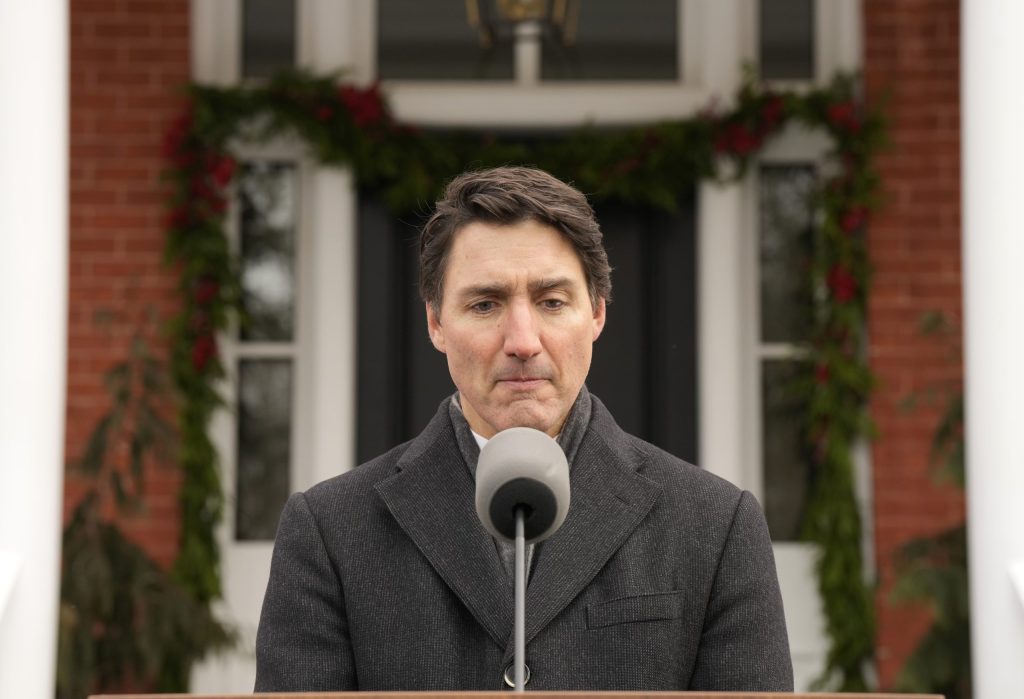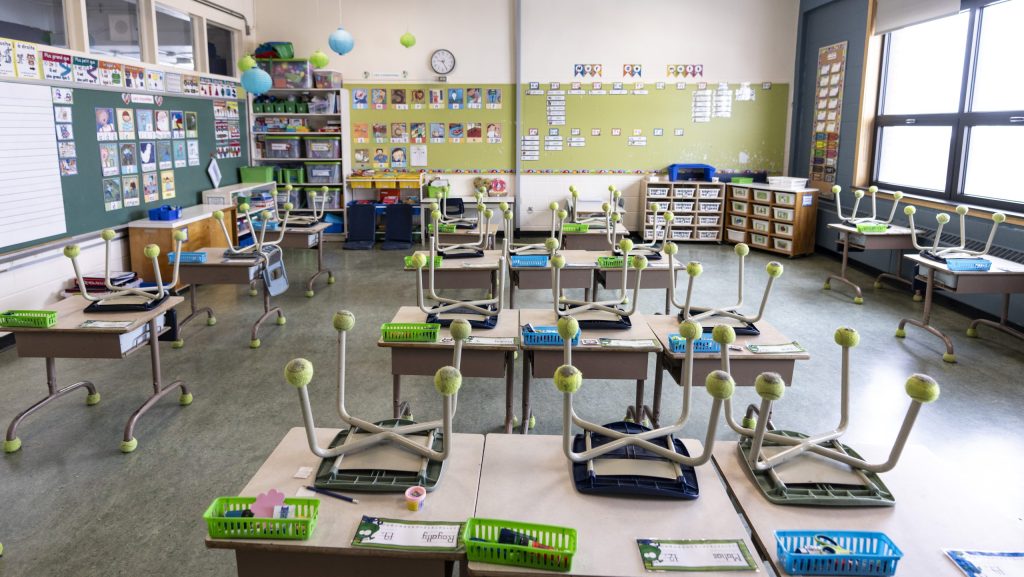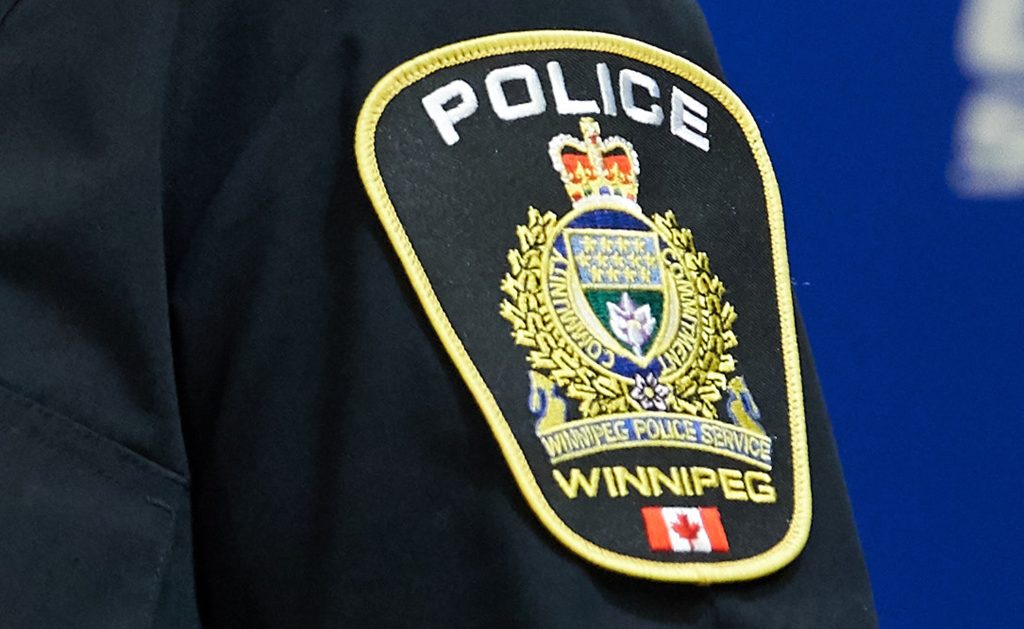Williams Lake First Nation finds 93 possible burial sites around former residential school
Posted January 25, 2022 3:07 pm.
Last Updated January 26, 2022 2:35 am.
Editor’s note: This article contains details some readers may find distressing
Emotional support or assistance for those who are affected by the residential school system can call the Indian Residential School Survivors Society’s crisis line 24/7 at: 1 (800) 721-0066.
Williams Lake First Nation says it has found dozens of potential human burials around the former St. Joseph’s Mission Residential School using ground-penetrating radar.
“To date, 93 reflections have been recorded at the St. Joseph’s Mission former residential school, which display characteristics indicative of potential human burials,” a preliminary report presented by the Nation reads.
Chief Willie Sellars says the findings found are from a “small footprint” of the area. He explains there are about 480 hectares of land connected to the operation at St. Joseph’s. To date, 14 hectares have been searched as part of a geophysical investigation.
“This journey has led our investigation team into the darkest recesses of human behaviour.”

According to Archaeologist Whitney Spearing, to date approximately 14 hectares of a total 470 have been subjected to geophysical investigation. The area completed is represented in solid red.
Archaeologist Whitney Spearing says a historic cemetery was included in the area searched and used to compare potential burials. Currently, 50 of the 93 “reflections” are not believed to be associated with the cemetery, however investigators are still working to better understand the findings.
“This cemetery has been used occasionally in modern times and was actively used during the operational time period of the school. In order to obtain the most accurate results across the investigation area GPR was conducted both inside and outside of the existing cemetery,” she explained. “The team is working diligently to understand how the 93 potential burials correlate with the historic and modern extent of the cemetery.”
Spearing says 50 of 93 potential burials are not associated with the cemetery at St. Joseph's Mission Residential School.
— Martin MacMahon (@martinmacmahon) January 25, 2022
Spearing says only excavation would confirm the presence of human remains and much more work is needed to make final determinations.
Indigenous experiences are ‘not forgotten footnotes of the past’
The grounds where St. Joseph’s Mission Residential School once stood are located in T’exelc territory, just a few kilometres from the WLFN community of Sugar Cane. It was operated by the Roman Catholic Church between 1891 and 1969 when the federal government took it over. It closed in 1981.
The report did not identify any of the potential bodies, however, Sellars emphasizes this is phase one in a series of investigations so the information will evolve. He says many children at the former residential school remain unaccounted for even after the WLFN’s work is done.
“For those children there will be no headstone, no unmarked grave, no small fragment of bone to be forensically analyzed. For those families there will be no closure. It is for those children and families that we grieve the most,” Sellar says, adding Tuesday’s announcement is “only one small snapshot of the investigation.”
Sellars says the First Nation is committed to the former students, their families, and the Indigenous communities affected by St. Joseph’s Mission Residential School. It will provide updates in the investigation in intervals, he says.
“It is important that these investigations remain in the public eye. That we can that we as a nation continue in an unwavering path forward in our pursuit of the truth with respect to St. Joseph Mission and other residential schools in Canada,” he added.
“There can be no reconciliation before there is truth. A truthful account must be told of the former students’ residential school experience, acknowledging the harm of colonial educational practices, recognizing the former students’ intrinsic right to the cultural and spiritual practices outlawed by government, and religious institutions and by restoring the familial history lost at the grounds of the mission. The efforts to investigate and reconcile the deaths and disappearances of children at these institutions must be through the leadership of First Nations people and First Nations communities.
In May, the Tk’emlúps te Secwépemc First Nation used ground-penetrating radar to confirm the remains of 215 children — some as young as three years old — had been found at the former Kamloops Indian Residential School site. The search of the school grounds, which was once the largest in Canada’s residential school system, renewed calls for all sites to be searched across the country.
The plan to search the site near Williams Lake was announced two weeks later.
Reports of the remains found in Kamloops shocked people across the world Sellars adds, and instigated many Canadians who had not heard of the residential school system, to ask, “How did this happen? How could the public not know?”
“Tk’emlúps te Secwépemc discovery forced Canadians to acknowledge the reality of residential schools and their country had for decades been misled and lied to by religious officials, the federal government and the RCMP,” he said.
The trauma Indigenous people and communities face is still present Sellars adds, the “abuse suffered at St. Joseph’s mission and other institutions are not forgotten footnotes of the past.”
“The horrors that occurred inside walls of St. Joseph Mission are still very real for those who lived them. And the legacy of these atrocities is still readily apparent in the numerous ways that intergenerational trauma manifests in First Nation communities.”
Next steps for Indigenous, non-Indigenous people
Angela White, executive director of the Indian Residential School Survivor Society of B.C., says it is preparing its crisis line for a possibly overwhelming number of calls to come after the Williams Lake findings.
“There will be some sadness, a lot of hurt, a lot of anxiety … In Kamloops, what we did realize quite quickly is that it gave permission for survivors to share their story to say that they no longer have to sit in that trauma alone,” White said.
“They can share it with someone who will finally hear and believe what they have to say.”
White says the next step, whether you’re Indigenous or not, is self care.
“Find someone you are comfortable with that you feel safe with in having these conversations … that you don’t let this go and get swept under the carpet,” she said.
“It’s going to trigger a lot of people over the next little bit. However, I think based on what we learned out of the Kamloops news is people are a little bit more prepared for what’s maybe coming out. And there’s been a lot of work when it comes to self healing and personal wellness between May 28 and now.”
Related articles:
-
Indigenous child welfare settlement leaves out Sixties Scoop survivors: advocate
-
Ottawa inks deal to share more residential school records with reconciliation centre
Work at the site near Williams Lake began in August of 2021, using the same technology used Tk’emlúps te Secwépemc to confirm the graves in Kamloops. As part of the investigation, survivors and their families are being interviewed, available records are being reviewed, and additional records are being sought from both the church and governments.
The findings from the first phase of the search were set to be released in December of 2021, but that was postponed.
The National Centre for Truth and Reconciliation lists the names of the 16 students who are known to have died while at St. Joseph’s. It also summarizes some of what has already been documented about abuse and the death of children at the institution.
In the months following the announcement by the Tk’emlúps te Secwépemc First Nation, more than 1,000 additional graves have been found on the sites of residential schools operated by the Roman Catholic Church.
Emotional support or assistance for those who are affected by the residential school system can call the Indian Residential School Survivors Society’s crisis line 24/7 at: 1 (800) 721-0066.
The Truth and Reconciliation Commission issued its final report on residential schools more than five years ago. The nearly 4,000-page account details the abuse inflicted on Indigenous children after they were taken forcibly from their families to institutions where they were forbidden to speak their language and punished brutally for any attempts to practice their culture. Physical and sexual abuse were rampant.
The final report of the commission estimates between 4,100 to 6,000 children died of abuse or neglect between 1890 and 1996. However, the discovery of unmarked graves is drawing more attention to Indigenous people, survivors, and experts who maintain this number is a significant underestimation.
White says there are a lot of resources out there and encourages everyone to go to the Truth and Reconciliation website, the UBC Indian Residential School History and Dialogue Centre, friendship centres, or organizations like hers to find a safe place to have a discussion and begin the healing journey.
“This is a healing journey for everyone. This is a healing journey where this country is just hearing about and learning about these truths and it does hit home because it’s the exact opposite of what we were told Canada stood up for,” she explained.
“For us, we are just preparing our crisis line … We are getting the cultural supports available as well as the resolution health support workers so if there’s an overwhelming amount of people coming in, we have enough people to answer those calls.”
One of the 94 Calls to Action was for the pope to apologize for the role of the Church in a system that saw 150,000 First Nations, Inuit, and Metis children taken from their families and confined in conditions that constituted cultural genocide. The federal government formally apologized for the policy and abuses in 2008. The Presbyterian, Anglican, and United churches have apologized for operating the institutions, and their role in perpetuating the abuse.
Pope Francis was supposed to meet with First Nations, Inuit, and Metis delegates at the Vatican in December. However, it was called off due to the pandemic. A papal visit to Canada was supposed to follow.
Related articles:
-
Williams Lake mayor apologizes for sharing offensive article on residential schools
-
Tk’emlúps te Secwepemc chief blasts Trudeau for ignoring NDTR invitations
According to White, many callers to the Indian Residential School Survivors Society’s crisis line say they are grateful they can speak with Indigenous councillors.
“There’s a general understanding of where the person on the other line is coming from. There is something that they truly know, they don’t have to validate, they don’t have to justify, they don’t have to go through a lot of steps to make themselves feel like they can be 100 per cent truthful.”
She wants affected people to know they are not alone.
“We are here to help you during this difficult time” she said, adding the support is local and offered by Indigenous people who can offer culturally sensitive support and resources.
Emotional support or assistance for those who are affected by the residential school system can call the Indian Residential School Survivors Society’s crisis line 24/7 at: 1 (800) 721-0066.








